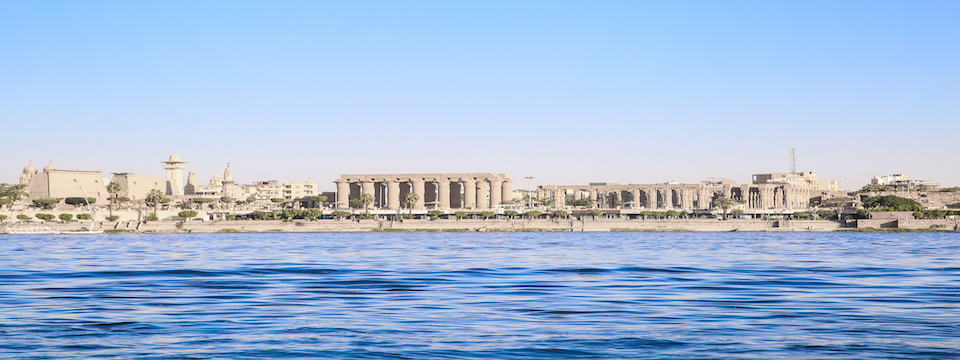The Nile River is the the longest river in the world at 4,132 miles (6,650 kilometres) flowing through eastern Africa, Sudan & Egypt where nearly all the cultural and historical sites of Ancient Egypt are found along its riverbanks. It rises south of the equator and flows northward through eastern Africa to Khartoum in The Sudan and Lake Nasser, over the Aswan dams, through Egypt to Cairo and then drains into the Mediterranean Sea between Alexandria and Port Said. River cruises between Luxor and Aswan are a comfortable way of visiting ancient sites like the Valley of the Kings and Philae.
White Nile and Blue Nile
The Nile has two major tributaries, the White Nile and Blue Nile. The latter is the source of most of the water and fertile soil. The former is the longer. The White Nile rises in the Great Lakes region of central Africa, probably in either Rwanda or Burundi. It flows north through Tanzania, Lake Victoria, Uganda and South Sudan. The Blue Nile starts at Lake Tana in Ethiopia and flows into Sudan from the southeast. The two rivers meet near the Sudanese capital of Khartoum.
In Egypt the Nile creates a fertile green valley across the desert where one of the oldest civilizations in the world began. River cruises concentrate on voyages between Luxor, site of ancient city of Thebes, and Aswan. From Luxor, cruisers can explore the Luxor Temple – built by Amenhotep III and Ramses II – before heading to Karnak Temple along an avenue of ram-headed sphinxes.On the opposite bank, visit the Valley of the Kings, the tomb of Hatshepsut, the only female pharaoh, the Colossi of Memnon and the Valley of the Queens. Further south is Edfu, home to the temple dedicated to Horus and Kom Ombo with its twin temples dedicated to Sobek, the crocodile god, and to Haroeris (Horus), the falcon-headed god. Finally at Aswan you can visit the Aswan High Dam, the Unfinished Obelisk and the sacred island of Philae.
Lake Nasser
Lake Nasser, created by the Aswan High Dam, built in the 1960s, is the second largest man-made lake in the world and is located on the River Nile in Upper Egypt and northern Sudan in a region known as Nubia. For Pharaonic, Greek, Roman, Byzantine and Arab civilizations, Nubia was the meeting point of Mediterranean and African cultures and served as the corridor to Africa, a highway for diverse cultures and political powers during thousands of years. On the western shore of the lake is Abu Simbel, the relocated site of two temples built by Ramses II. Other sites around the lake include the Temple of Amada, Kasr Ibrim, Wadi el Saboua, the Temple of Dakka (dedicated to the God Thot) and the Greco-Roman temple of Meharakka (dedicated to Serapis).





